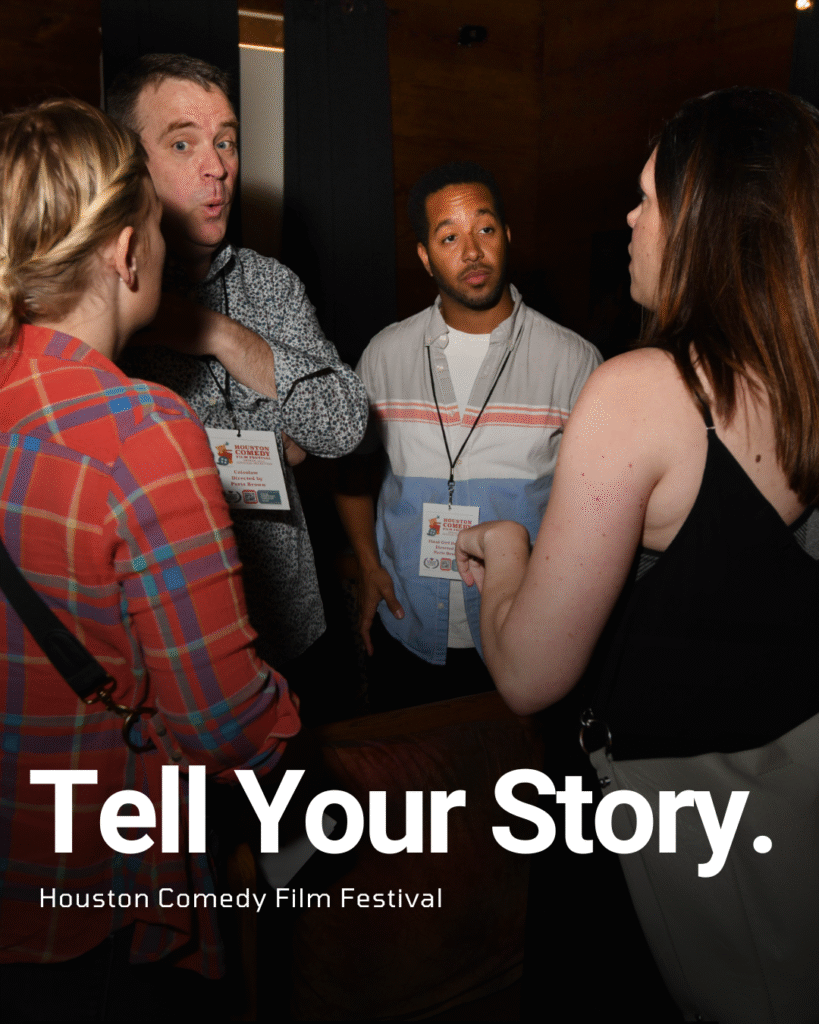Entertainment
Rachel Leviss Talks A Lot About “Embarrassing” First Hookup with Tom Sandoval on January 10, 2024 at 11:12 am The Hollywood Gossip
Rachel Leviss started her podcasting career off this week with a bang.
By delving into the first time she banged Tom Sandoval.
Just ahead of Vanderpump Rules Season 11 — a series of episodes on which Leviss has chosen NOT to appear — the former Bravo personality broadcast the first episode of Rachel Goes Rogue on Monday.
Raquel Leviss arrives at the 5th Annual World Dog Day at West Hollywood Park on August 07, 2021 in West Hollywood. (Photo by Rodin Eckenroth/Getty Images)
“I don’t want to be with Tom and I’ve made the decision to cut Tom out of my life,” Leviss told listeners of why she turned down Season 11.
“Going back to do the show, it would force me to interact with him … and I know I’m on the outskirts with all the other cast, so I wouldn’t get my story across.”
Leviss is referring here to Tom Sandoval, of course, with whom she had a very sordid and well-publicized affair last year.
The two slept together for many months while Sandoval was dating fellow Vanderpump Rules co-star, Ariana Madix; the affair was exposed after Madix found a FaceTime video from her alleged friend on Sandoval’s phone.
(Bravo)
“I had become the worst version of myself through the 7 months of secrecy, deception and going along with these lies that ate me up,” Leviss said on her podcast of the relationship.
“And part of that is my fault … and it was a really bad choice.
“But I was still in relationship with Tom, we were talking on the phone when I went in for treatment and in those months I was in there, I was debating whether or not to do the show.”
Indeed, in April, Leviss checked into rehab in order to deal with mental health issues.
Raquel Leviss uploaded this photo of herself on Instagram in the late summer of 2023. (Instagram)
In the end, Leviss said she felt she was watching “the worst version” of herself when revisiting Season 10 and now believes she “made the right decision by leaving.”
Elsewhere, in an especially revealing segment of the podcast, Leviss opened up about the first time she slept with Sandoval.
She said the two went out for drinks at The Abbey in West Hollywood and then she offered to give him a ride home.
Once there, he invited her inside for a drink — while Ariana Madix slept upstairs.
However, Sandoval ended up being locked out of the house, so they went around to the back of the house to try and find another way in.
“We go in the back, and the sliding door isn’t unlocked, so he was like, ‘Well, we’ve got the fire pit here,’ and I was like, ‘Yeah, the fire pit’s cool, we can just keep talking,’” Leviss recalled.
“We got the fire pit going, we’re chatting, and then he goes, ‘You know what the best thing about this pool is? That it’s heated.’”
The most recent season of Vanderpump Rules was terrible for Sandoval’s reputation. (Photo Credit: Bravo)
Naturally, the friends then jumped in.
“I took my jeans off, and I had this corset top on, so I left that on, and I was in my underwear, and I went in his pool,” Leviss said.
Sandoval was in his boxers. He swam toward her, Rachel now says. And then…
He “looked at me a certain way and then he grabbed me, spun me and kissed me and I was like surprised but like happy. Ugh, so bad, so embarrassing.”
Scheana Shay was once close friends with Raquel Leviss. (2023 Bravo Media LLC)
Continued Leviss on this subject:
“I knew it was wrong, Tom knew it was wrong. Right after Tom kissed me, he like sat on the stair of the pool and he was like, hands on his face, his mind must have been running a million miles a minute, contemplating what to do.”
And yet… the pair kept hooking up for a very long time.
According to Leviss, she said she should leave and started to get dressed, before he told her to sit down while he thought things over.
Sandoval supposedly told Rachel he really liked her… the ended up talking more in the car… and then had sex inside of it.
Tom Sandoval just doesn’t seem like a very good person. (Photo Credit: Bravo)
When asked by her cohosts whether they did “everything” in this car, Leviss responded by saying, “It was very bad.”
Sandoval has trashed Leviss on many occasions since they split, and Leviss said on her podcast that she is extremely over her ex.
She said hearing him speak on a recent podcast interview made her feel like she “was going to throw up.”
She added, “His voice repulsed me. And I’m like, ‘Okay, this is a good sign.’”
As for why she’s now hosting her own podcast?
“I would rather speak my truth and share my story and be ridiculed for it than sit idly by and watch this whole season pan out and not get my story across. That’s why I’m doing my podcast. I’m really scared, I’m really nervous.”
Rachel Leviss Talks A Lot About “Embarrassing” First Hookup with Tom Sandoval was originally published on The Hollywood Gossip.
Rachel Leviss has opened up for the first time — about the first time she slept with ex-lover Tom Sandoval.
Rachel Leviss Talks A Lot About “Embarrassing” First Hookup with Tom Sandoval was originally published on The Hollywood Gossip.
The Hollywood Gossip Read More
Entertainment
Jennifer Lopez’s Ex Fires Back: “You Are the Problem”

Ojani Noa Accuses J.Lo of Cheating After “Never Been Loved” Comments
Jennifer Lopez is once again at the center of a media storm — but this time, it’s her first husband, Ojani Noa, turning up the heat. Following Lopez’s recent Howard Stern Show interview, in which she claimed she has “never been truly loved” by any of her exes, Noa has publicly accused the superstar of cheating and playing the victim.
In the viral Instagram post that has now spread across major outlets like TMZ and New York Post, Noa didn’t hold back.
“Stop putting us down. Stop putting me down with your victim card,” he wrote. “The problem is not us. Not me. The problem is you. You’re the one who couldn’t keep it in your pants.”
“You Chose Fame and Lies Over Love”
Noa and Lopez were married briefly from 1997 to 1998, before her rise to Hollywood superstardom. In his explosive statement, he accused her of being unfaithful during their marriage, claiming she prioritized fame over their relationship.
“You have been loved a few times. You’ve been married four times. And have had countless relationships in between,” Noa continued. “You decided to lie, to cheat on me. You begged me to keep the marriage intact to avoid bad press.”
Noa described himself as “faithful, honest, and loving,” saying he uprooted his life and career to support Lopez at the beginning of her entertainment journey. “I left my family, my friends, everything behind for you,” he wrote, “but once fame came calling, you left me behind.”
Lopez Silent Amid Growing Backlash
As of now, Jennifer Lopez has not publicly responded to Noa’s allegations. During her Howard Stern interview, the singer and actress claimed her former partners “weren’t capable” of loving her, saying, “It’s not that I’m not lovable… it’s that they’re not capable.”
Her remarks were widely interpreted as referencing all of her ex-husbands — including Marc Anthony, Cris Judd, and Ben Affleck — but it was Noa who reacted first and most forcefully. His comments have ignited widespread debate online, with many questioning whether Lopez’s honesty came at the expense of others’ reputations.
Public Response and Media Fallout
The online reaction has been intense, with social media users split between defending Lopez’s right to share her truth and blasting her for allegedly rewriting history. Meanwhile, entertainment analysts note that the controversy adds to an increasingly turbulent year for the singer, following canceled tours, underperforming films, and ongoing scrutiny over her marriage to Affleck.
This latest backlash has also reignited conversations about Lopez’s highly publicized romantic history. As tabloids and fans speculate whether more exes might respond, the situation underscores an old truth in celebrity culture — that every candid confession comes with consequences.
For now, Jennifer Lopez remains silent. But in the court of public opinion, the debate about who’s really at fault in her love story is only just beginning.
Entertainment
Selling Your Soul in Hollywood: The Hidden Cost of Fame

By all appearances, Hollywood is a dream factory — a place where charisma, talent, and luck collide to create stars. But behind the camera lights and red carpets lies a conversation few inside the industry speak openly about: the spiritual and moral price of ambition.

For actor Omar Gooding, the idea of “selling your soul” in Hollywood isn’t a metaphor — it’s a moral process that begins with tiny compromises. In an October 2025 interview, Gooding explained that no one in Hollywood makes a literal deal with the devil. Instead, it’s the quiet yeses, the moments when comfort overrides conviction, that mark the beginning of the trade. “They don’t say, ‘Take this or you’ll never make it,’” he said. “They just put it in front of you. You choose.”
Those choices, he argues, create a pattern. Once you show that you’ll accept something you once resisted, the industry notices. “Hollywood knows who it can get away with what,” Gooding said. “One thing always leads to another.” The phrase “selling your soul,” in this context, means losing your say — doing what you’re told rather than what you believe in.
That moral tension has long shadowed the arts. Comedians like Dave Chappelle, who famously walked away from millions to preserve his creative integrity, often serve as examples of where conviction and career collide. In resurfaced interviews, Chappelle hinted that he felt manipulated and silenced by powerful figures who sought control of his narrative, warning that “they’re trying to convince me I’m insane.”
This isn’t just about conspiracy — it’s about agency. Hollywood runs on perception. Performers are rewarded for being agreeable, moldable, entertaining. Those who question the machine or refuse the script risk exile, while those who conform are elevated — sometimes beyond what they can handle.
“We see the ‘collections’ all the time,” Gooding explained. “When the bill comes due, you can tell. They made that deal long ago.”

But the story doesn’t end in darkness. Gooding also emphasizes that in today’s entertainment landscape, artists have more control than ever. With streaming, social media, and creator‑driven platforms, performers don’t have to “play the game” to be seen. Independent creators can build their own stages, speak their own truths, and reach millions without trading authenticity for access.
Still, the temptation remains — recognition, validation, quick success. And every generation of artists must answer the same question: What are you willing to do for fame?
As Gooding put it, “You just make the best choices you can. Because once it’s gone — your name, your peace, your soul — there’s no buying it back.”
Entertainment
California Bans AI Clones from Replacing Real Talent

California just made a dramatic stand for human creativity, defeating the threat of AI actor clones with a sweeping new law that puts people—not algorithms—back in the Hollywood spotlight. With the stroke of Governor Gavin Newsom’s pen in October 2025, the state has sent a clear message to studios, tech companies, and the world: entertainment’s heart belongs to those who create and perform, not to digital facsimiles.
California Draws a Hard Line: No More AI Clones
For months, the entertainment industry has been divided over the use of artificial intelligence in filmmaking. Studios, lured by promises of cost-cutting and creative flexibility, have invested in software that can mimic an actor’s face, voice, and even emotional range. But for performers, this wave of synthetic reproduction has triggered alarm—encouraged by chilling stories of deepfakes, unauthorized digital doubles, and contracts that let studios reuse a star’s likeness indefinitely, sometimes without pay or approval.
The new California law, anchored by AB 2602 and AB 1836, changes everything:
- Every contract must explicitly detail how studios can use digital replicas or voice models, preventing once-common “blank check” agreements that overlooked this risk.
- No one—not studios nor streaming giants—can create or release AI-generated clones of an actor, living or dead, without clear, written consent from the performer or their estate.
- The law gives families new powers to defend loved ones from posthumous deepfake exploitation, closing painful loopholes that once let virtual versions of late icons appear in new ads, films, or games.
Actors Celebrate a Major Victory
The legislation rides the momentum of the recent SAG-AFTRA strike, where real-life talent demanded control over their own digital destinies. Leaders say these protections will empower artists to negotiate fair contracts and refuse participation in projects that cross ethical lines, restoring dignity and choice in an industry threatened by silent algorithms.
Stars, unions, and advocacy groups are hailing the law as the most robust defense yet against unwanted AI replications.
As one actor put it, “This isn’t just about money—it’s about identity, legacy, and respect for real artists in a synthetic age.”
A New Chapter for the Entertainment Industry
California’s move isn’t just a victory for local talent—it’s a warning shot to studios everywhere. Companies will now be forced to rethink production pipelines, consult legal counsel, and obtain proper clearance before digitally cloning anyone. Global entertainment platforms and tech developers will need to comply if they want to do business in the world’s entertainment capital.

These laws also set a template likely to ripple through other creative fields, from musicians whose voices can be synthesized to writers whose work could be mimicked by generative AI. For now, California performers finally have a powerful shield, ready to fight for the right to shape their own public image.
Conclusion: Human Talent Takes Center Stage
With its no-nonsense ban on AI actor clones, California draws a bold line, championing the work, likeness, and very humanity of its creative stars. It’s a landmark step that forces the entertainment industry to choose: respect real talent, or face real consequences. The age of the consentless digital double is over—human performers remain the true source of Hollywood magic.

 Business4 weeks ago
Business4 weeks agoDisney Loses $3.87 Billion as Subscription Cancellations Surge After Kimmel Suspension

 Entertainment4 weeks ago
Entertainment4 weeks agoWhat the Deletion Frenzy Reveals in the David and Celeste Tragedy

 Entertainment4 weeks ago
Entertainment4 weeks agoExecutive Producer Debut: How Celia Carver Created Festival Hit ‘Afterparty’

 Health4 weeks ago
Health4 weeks agoRussia Claims 100% Success With New mRNA Cancer Vaccine

 Business3 weeks ago
Business3 weeks agoWhy Are Influencers Getting $7K to Post About Israel?

 Health4 weeks ago
Health4 weeks agoWhy Did Gen Z QUIT Drinking Alcohol?

 Advice4 weeks ago
Advice4 weeks agoHow AI Is Forcing Everyone Into the Entrepreneur Game

 Entertainment3 weeks ago
Entertainment3 weeks agoKeith Urban and Nicole Kidman Split After 20 Years as Actress Files for Divorce






























